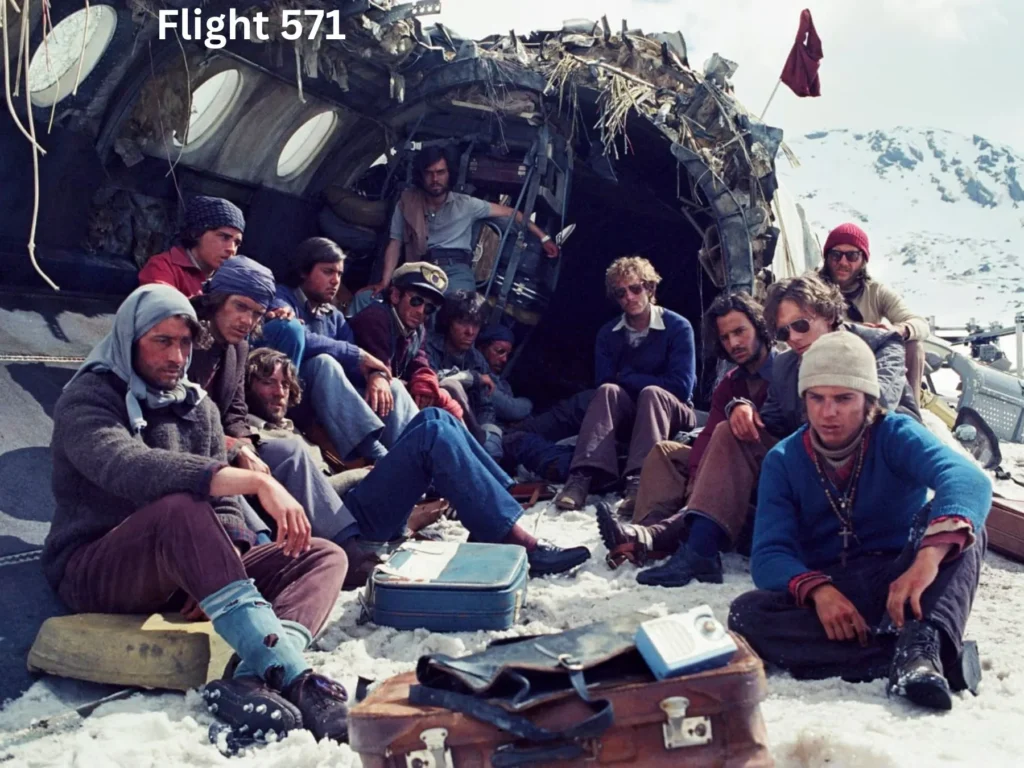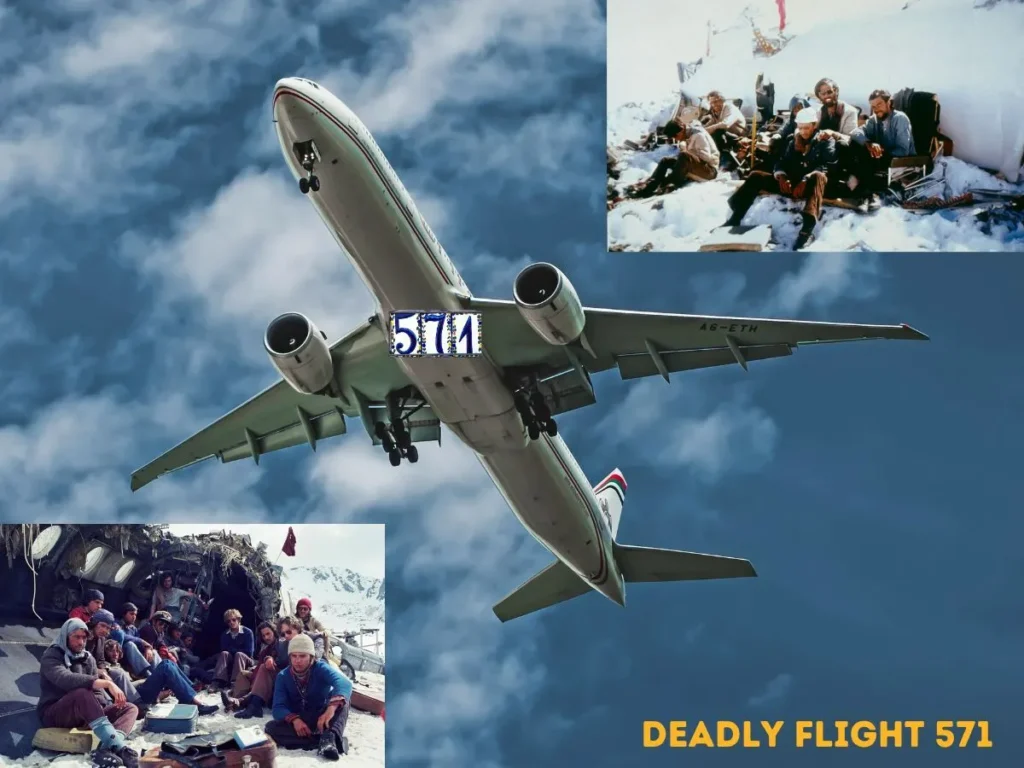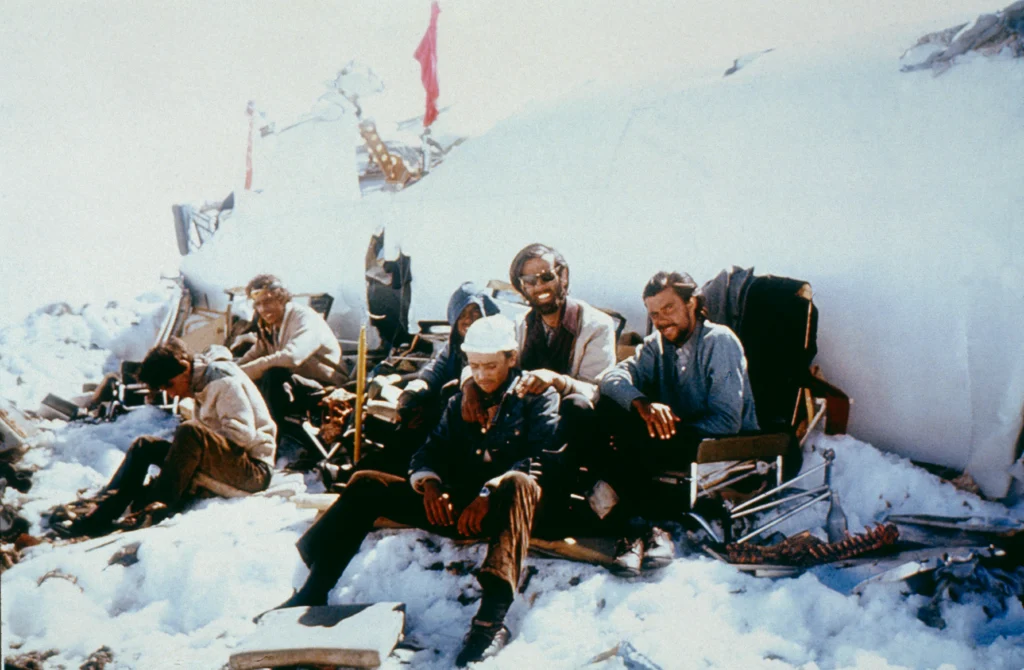Table of Contents
ToggleAndes Tragedy: The Story of Flight 571
Introduction:
On October 13, 1972, Uruguayan Air Force Flight 571 from Montevideo, Uruguay, to Santiago, Chile, carrying a rugby team crashed in the Andes, tearing apart on impact. Though 12 perished immediately, the remaining 33 faced a brutal fight for survival. Stranded at high altitude in freezing temperatures, they endured dwindling food supplies and an avalanche that claimed more lives. Faced with starvation, the survivors made the unthinkable decision to eat the flesh of those who didn’t make it. With hope fading, two men embarked on a daring trek through the mountains, eventually leading to the rescue of the remaining 16 survivors after 72 harrowing days.
Let’s delve deep into the incredible saga of Flight 571, exploring the events leading up to the crash, the challenges faced by the survivors, and the enduring legacy of their remarkable journey.

The Ill-Fated Voyage:
Flight 571, a Fairchild FH-227D aircraft, departed from Carrasco International Airport in Montevideo with 45 passengers on board. Among them were members of the Old Christians Club rugby team, along with their friends, family, and crew members. The journey was expected to be routine, but unforeseen circumstances lay ahead.
A Catastrophic Turn of Events:
As the aircraft traversed the Andes Mountains, adverse weather conditions and navigational errors led to a devastating crash. The impact shattered the plane, leaving its occupants stranded amidst the rugged terrain. In an instant, their lives were forever changed, and they found themselves thrust into a battle for survival against nature’s most formidable forces.
Struggle Against the Elements:
Marooned at an altitude of over 11,000 feet, the survivors faced a hostile environment characterized by freezing temperatures, high winds, and limited resources. With no immediate prospect of rescue, they were forced to confront the harsh realities of their situation. Despite their dire circumstances, they refused to succumb to despair, drawing strength from their bonds of camaraderie and the will to persevere.

The Agonizing Choice:
As days turned into weeks, the survivors’ plight grew increasingly desperate. Food supplies dwindled, and starvation loomed ominously on the horizon. Faced with the grim prospect of perishing from hunger, they confronted an agonizing choice: whether to resort to cannibalism to sustain themselves. It was a decision fraught with moral and ethical complexities, one that would test the very limits of their humanity.
A Beacon of Hope:
Amidst the bleakness of their circumstances, a glimmer of hope emerged when two of the survivors embarked on a daring journey to seek help. Scaling treacherous terrain and braving the elements, they defied all odds and encountered a Chilean shepherd who provided crucial assistance. This encounter marked a turning point, setting in motion a chain of events that would ultimately lead to the rescue of the remaining survivors.
The Legacy of Flight 571:
The story of Uruguayan Air Force Flight 571 is more than just a tale of survival; it is a testament to the resilience of the human spirit in the face of unimaginable adversity. From the depths of despair emerged tales of courage, sacrifice, and unwavering determination. The survivors’ remarkable journey serves as a beacon of hope, inspiring generations to embrace the indomitable power of the human will.
The incident of Flight 571, also known as the Andes flight disaster, offers several important lessons.
- Resilience: The survival story of the passengers demonstrates the incredible resilience of the human spirit. Despite facing unimaginable challenges, many individuals found the strength to persevere and survive.
- Teamwork and Cooperation: The survivors had to work together to increase their chances of survival. They shared resources, supported one another emotionally, and collaborated on creative solutions to their predicament.
- Adaptability: When faced with a life-threatening situation, the survivors had to quickly adapt to their new environment and circumstances. They found ways to utilize the limited resources available to them and improvised tools for survival.
- Leadership: Leadership emerged naturally among the survivors, with some individuals taking on leadership roles to organize efforts, make decisions, and maintain morale.
- Ethical Dilemmas: The incident raises complex ethical dilemmas, such as the difficult decision to resort to cannibalism in order to survive. It prompts reflection on the moral boundaries individuals may face in extreme situations.
- Preparedness: While the circumstances of the Andes flight disaster were extreme and rare, it underscores the importance of being prepared for unexpected emergencies. It highlights the value of emergency training, survival skills, and the need for appropriate equipment and supplies in challenging situations.
- Psychological Resilience: The survivors’ ability to cope with trauma, grief, and guilt offers insights into the resilience of the human psyche. Their experiences shed light on the psychological impact of survival in extreme conditions.
Overall, the incident of Flight 571 serves as a powerful reminder of the strength of the human spirit, the importance of solidarity and cooperation in times of crisis, and the resilience of individuals faced with unimaginable challenges.

Conclusion:
Uruguayan Air Force Flight 571 stands as a testament to the triumph of the human spirit over adversity. Through courage, resilience, and unwavering determination, the survivors defied the odds and emerged victorious against nature’s most formidable challenges. Their remarkable journey serves as a reminder of the boundless resilience that resides within each of us, a legacy that will endure for generations to come.
Video Courtesy: YouTube & Dhruv Rathee
